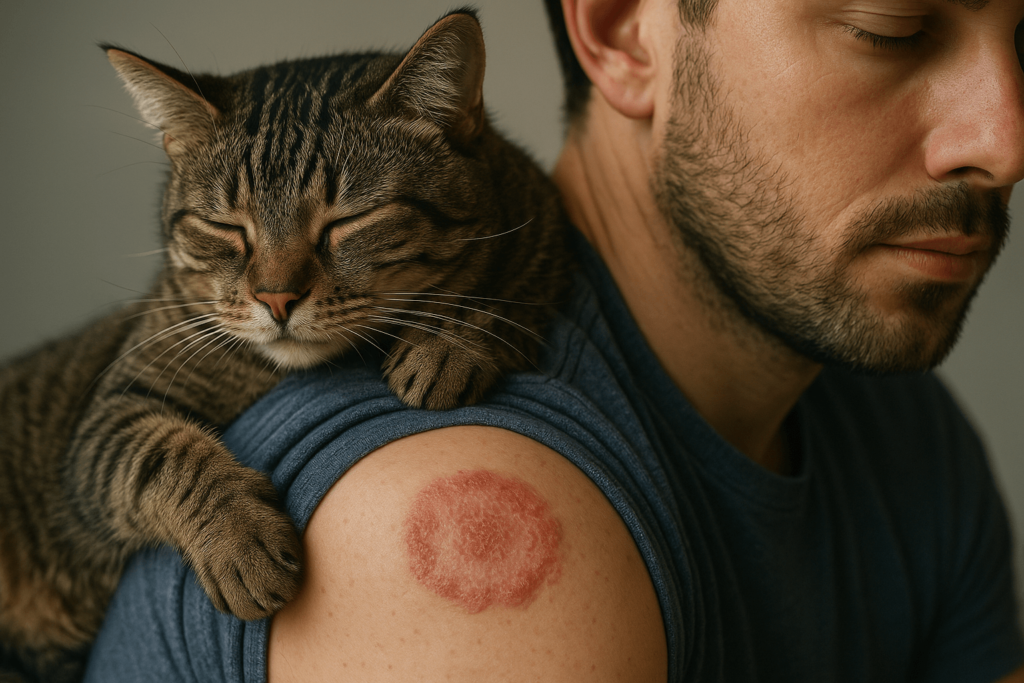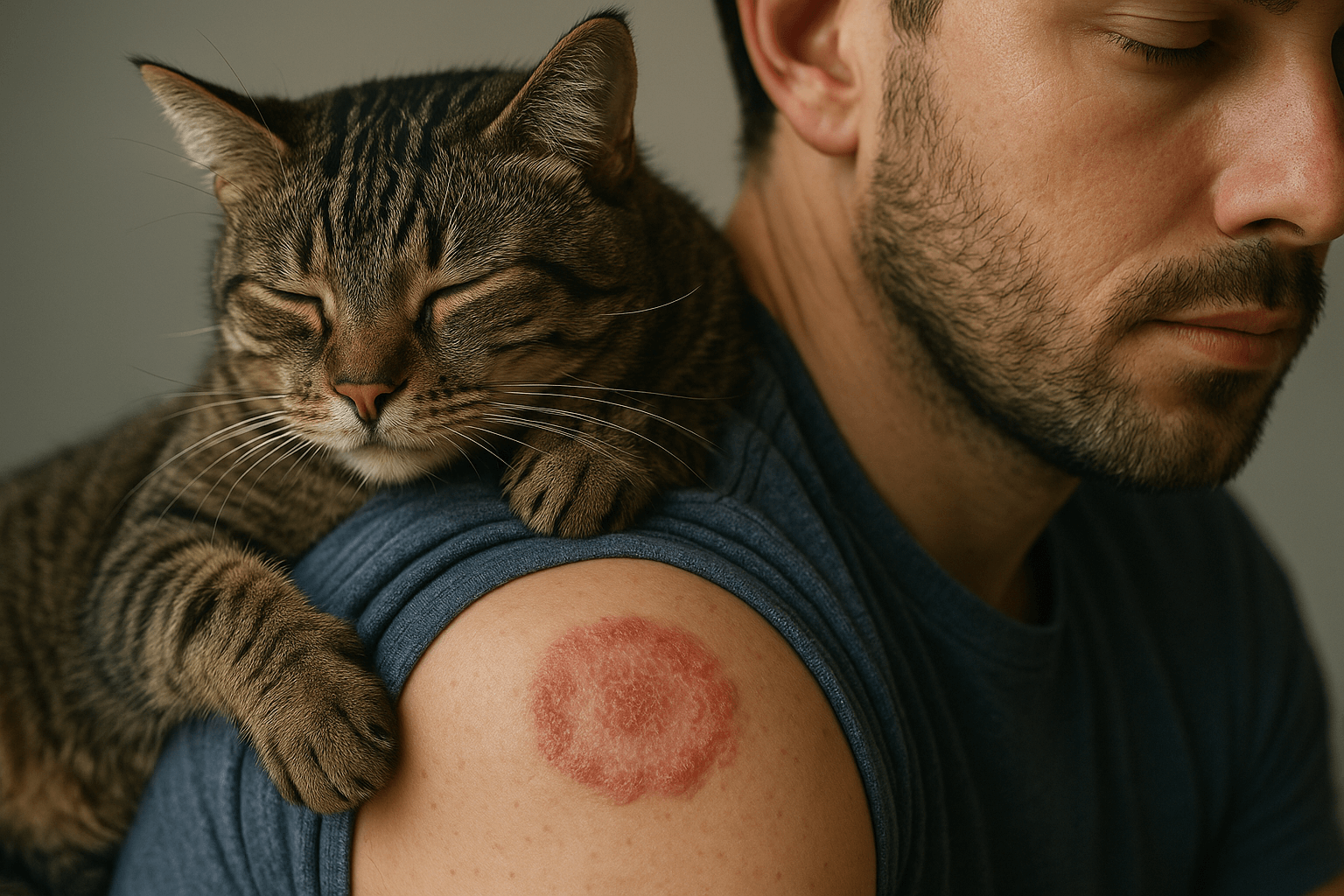Can You Get Cat Fungus on Humans? The Hidden Risk Behind That Cute Purring Companion
Cats bring joy, comfort, and warmth into our homes—but beneath their soft fur lies a silent world of microbes. One of the most overlooked risks? Fungal infections that can pass from cat to human. While rare, cat fungus on humans is a real possibility, especially for those with weakened immune systems, children, or elderly caregivers. This isn’t about fear—it’s about awareness. Understanding how fungi spread, what to watch for, and how to prevent transmission empowers you to enjoy your feline friend without compromise.
How Cat Fungus Spreads to Humans
Fungal infections in cats—most commonly ringworm—are not caused by worms at all, but by dermatophytes: microscopic fungi that thrive on keratin in skin, hair, and nails. Here’s how transmission happens:
Direct Contact:
Petting, cuddling, or sleeping with an infected cat transfers fungal spores onto your skin.Indirect Contact:
Spores linger for months on bedding, furniture, brushes, and carpets—even after the cat appears healed.Environmental Contamination:
Fungal spores become airborne and settle on surfaces, making homes with multiple pets or poor ventilation high-risk zones.Broken Skin Exposure:
Cuts, scrapes, or eczema provide easy entry points for spores to invade human skin.High-Risk Groups:
Children, seniors, pregnant women, and immunocompromised individuals are far more susceptible to infection.
The truth? You don’t need to be bitten or scratched. Just being near an infected cat—or even their environment—is enough. Awareness is your first line of defense.

Common Types of Fungal Infections Cats Carry (and Can Pass On)
Not all fungi are the same. The most common culprits in cats—and their human counterparts—are specific dermatophytes with distinct behaviors:
Microsporum canis:
The #1 cause of ringworm in cats and humans. Highly contagious, it appears as circular, red, scaly patches on skin.Trichophyton mentagrophytes:
Often linked to rodents or outdoor cats. Can cause more aggressive lesions and is harder to treat.Microsporum gypseum:
Found in soil; cats pick it up from digging or outdoor exposure. Rarely spreads to humans but possible.Epidermophyton floccosum:
Less common in cats, but can cause athlete’s foot-like infections in humans through contact.Non-dermatophyte molds:
Rare, but can infect humans with compromised immunity after prolonged exposure to moldy environments where cats live.
Most human cases stem from Microsporum canis. It’s not just “a little itch”—it’s a persistent, spreading infection that requires medical treatment. Ignoring it risks spreading to other family members or pets.
Check this guide 👉How to Treat Cat Fungus at Home: Best 7 Expert Tips!
Check this guide 👉Fungus on Cat Paw: Best 7 Expert Tips!
Check this guide 👉Understanding Cat Nose Fungus: Best 7 Health Tips!
| Cat Symptoms of Fungus | Human Symptoms of Fungus |
|---|---|
| Circular patches of hair loss with red, scaly edges | Red, ring-shaped rash with raised, scaly borders |
| Brittle, broken, or stubbly fur | Itching, burning, or stinging sensation on skin |
| Dandruff-like flakes on skin or coat | Red, inflamed patches that may blister or ooze |
| Excessive licking or scratching of affected areas | Rash spreading outward in a circular pattern |
| Darkened or thickened skin in chronic cases | Rash on scalp, face, arms, or hands—common contact areas |
Why Cat Fungus Is Often Misdiagnosed (in Cats and Humans)
Ringworm doesn’t always look like the classic “ring.” That’s why it’s so easily missed—and why it spreads silently.
Cats Can Be Asymptomatic Carriers:
Some cats show no visible signs but still shed spores daily—especially long-haired breeds or kittens.Human Rashes Mimic Other Conditions:
Eczema, psoriasis, or allergic reactions look similar. Many assume it’s a bug bite or irritation.Veterinarians Overlook Testing:
Not all vets routinely test for fungus unless lesions are obvious. A negative visual exam ≠ negative infection.Home Remedies Delay Real Treatment:
Tea tree oil, coconut oil, or apple cider vinegar may soothe—but won’t kill spores. This prolongs transmission.Delayed Diagnosis = Wider Spread:
By the time a human sees a doctor, the fungus may have already infected other family members or pets.
The biggest danger? Complacency. If your cat has a patchy coat and you have a slightly itchy red circle on your arm—don’t wait. Test both.
How to Prevent Cat Fungus from Spreading to Humans
Prevention isn’t about avoiding your cat—it’s about smart, consistent habits. Here’s how to protect your household:
Regular Veterinary Checkups:
Even healthy-looking cats should be tested for fungus if there’s a known exposure or outbreak.Wash Hands After Handling Your Cat:
Especially before touching your face, eating, or caring for children or elderly family members.Clean and Disinfect Shared Spaces:
Vacuum daily with HEPA filter. Wash bedding, towels, and cat toys weekly in hot water.Isolate Infected Cats:
Keep them away from bedrooms, couches, and shared spaces until cleared by your vet.Avoid Sharing Grooming Tools:
Brushes, combs, and bedding should never be shared between pets—or between pets and humans.
Fungus thrives in warmth and moisture. A clean, dry, well-ventilated home is your best shield.
What to Do If You Suspect Cat Fungus on Humans
Spotting symptoms? Don’t panic—but don’t delay. Here’s your step-by-step action plan:
Visit Your Doctor Immediately:
Dermatologists can perform a Wood’s lamp test or fungal culture to confirm diagnosis.Take Your Cat to the Vet:
Both must be treated simultaneously. Treating only the human will lead to reinfection.Follow Prescription Protocols:
Antifungal creams, oral medications (like terbinafine), and medicated shampoos are often required.Deep-Clean Your Home:
Use a bleach solution (1:10) on hard surfaces. Steam-clean carpets and upholstery. Dispose of contaminated items if needed.Monitor All Household Members:
Children, seniors, and pets should be checked—even if asymptomatic. Early detection stops outbreaks.
Treatment takes weeks. Patience and consistency are non-negotiable. Skipping doses or stopping early invites recurrence.
When to Worry: High-Risk Scenarios and Complications
Most cases are mild—but some can become serious. Know when to escalate care:
Persistent or Spreading Rash:
If the rash grows beyond 2 inches or doesn’t improve after 2 weeks of treatment, return to your doctor.Fever or Swollen Lymph Nodes:
Indicates possible systemic spread—rare but dangerous in immunocompromised individuals.Infection on Scalp or Nails:
Tinea capitis (scalp ringworm) can cause permanent hair loss. Tinea unguium (nail fungus) is extremely stubborn.Infants or Elderly with Weak Immunity:
Their bodies can’t fight spores effectively. Hospitalization may be required in severe cases.Multiple Pets Infected:
Suggests environmental contamination. Professional decontamination may be necessary.
This isn’t just “a rash.” It’s a sign your home’s microbial balance is off. Address it holistically.
Myths vs. Facts About Cat Fungus Transmission
Let’s clear up the confusion once and for all:
Myth: “Only dirty cats get fungus.”
Fact: Healthy, well-groomed cats can carry and spread fungus. It’s about exposure, not hygiene.Myth: “You can’t catch it from a cat that looks fine.”
Fact: Up to 30% of infected cats show no symptoms but still shed infectious spores.Myth: “It goes away on its own.”
Fact: Untreated, it spreads to other pets and people—and can become chronic.Myth: “Natural remedies are enough.”
Fact: Coconut oil, tea tree, or vinegar may soothe—but won’t kill spores. Only antifungals work.Myth: “Declawing or shaving the cat stops it.”
Fact: Spores live in the skin and environment—not just the fur. Shaving helps, but isn’t a cure.
Knowledge prevents fear. Misinformation spreads infection.
FAQ: Cat Fungus on Humans
Can I get ringworm from my cat even if I don’t touch it?
Yes. Fungal spores float in the air and settle on surfaces. Simply being in the same room with an infected cat poses a risk.
How long does it take for symptoms to appear after exposure?
Usually 4–14 days in humans. In cats, it can take up to 2–4 weeks.
Is ringworm contagious between humans?
Absolutely. Once one person is infected, it can spread through towels, clothing, or shared surfaces.
Can I use over-the-counter antifungal cream?
Only after diagnosis. Misusing creams can mask symptoms and delay proper treatment.
Should I quarantine my cat?
Yes. Keep infected cats isolated from other pets and people until cleared by your vet—usually after two negative cultures.
Respect the Bond—Without Compromising Health
Your cat is more than a pet. They’re a quiet companion, a source of comfort, a little heartbeat beside you at night. But love doesn’t mean ignoring invisible threats. Cat fungus on humans isn’t a horror story—it’s a preventable reality.
By understanding how it spreads, recognizing the subtle signs, and acting with calm, consistent care, you protect both your family and your feline. You don’t have to choose between loving your cat and staying healthy. You can do both.
Canned Pumpkin for Cat Diarrhea: Best 7 Expert Tips! Natural remedy to firm stools, soothe upset bellies, and support gut health safely.
Can a Cat Give You Scabies? Best 7 Expert Tips! Discover the truth about feline mites, human skin risks, and how to protect yourself—without panic.
Cat Flea vs Human Flea: Best 7 Expert Tips! Discover the truth about bites, species, and how to eliminate infestations for good.
Weird Cat Behaviors: Best 7 Expert Tips! Discover why cats do strange things—and how to understand, not punish, their instincts for a happier home.





